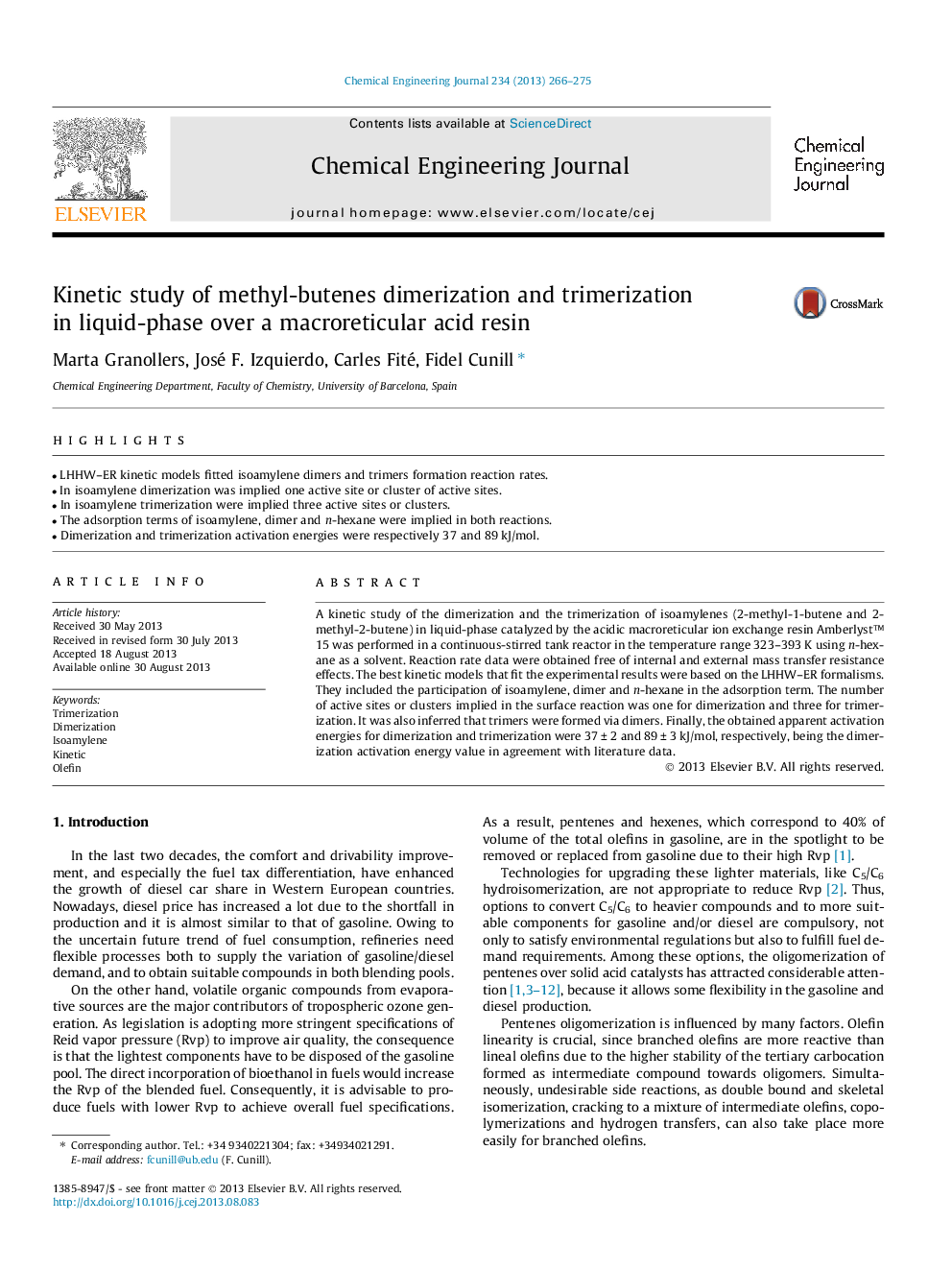| Article ID | Journal | Published Year | Pages | File Type |
|---|---|---|---|---|
| 148105 | Chemical Engineering Journal | 2013 | 10 Pages |
•LHHW–ER kinetic models fitted isoamylene dimers and trimers formation reaction rates.•In isoamylene dimerization was implied one active site or cluster of active sites.•In isoamylene trimerization were implied three active sites or clusters.•The adsorption terms of isoamylene, dimer and n-hexane were implied in both reactions.•Dimerization and trimerization activation energies were respectively 37 and 89 kJ/mol.
A kinetic study of the dimerization and the trimerization of isoamylenes (2-methyl-1-butene and 2-methyl-2-butene) in liquid-phase catalyzed by the acidic macroreticular ion exchange resin Amberlyst™ 15 was performed in a continuous-stirred tank reactor in the temperature range 323–393 K using n-hexane as a solvent. Reaction rate data were obtained free of internal and external mass transfer resistance effects. The best kinetic models that fit the experimental results were based on the LHHW–ER formalisms. They included the participation of isoamylene, dimer and n-hexane in the adsorption term. The number of active sites or clusters implied in the surface reaction was one for dimerization and three for trimerization. It was also inferred that trimers were formed via dimers. Finally, the obtained apparent activation energies for dimerization and trimerization were 37 ± 2 and 89 ± 3 kJ/mol, respectively, being the dimerization activation energy value in agreement with literature data.
